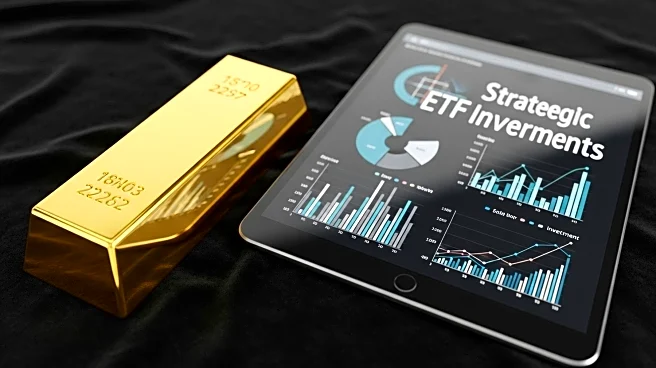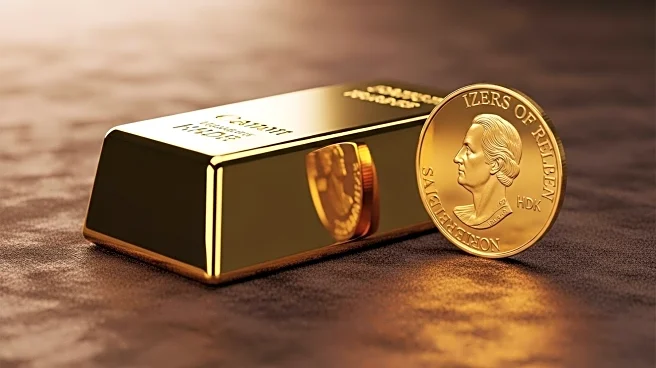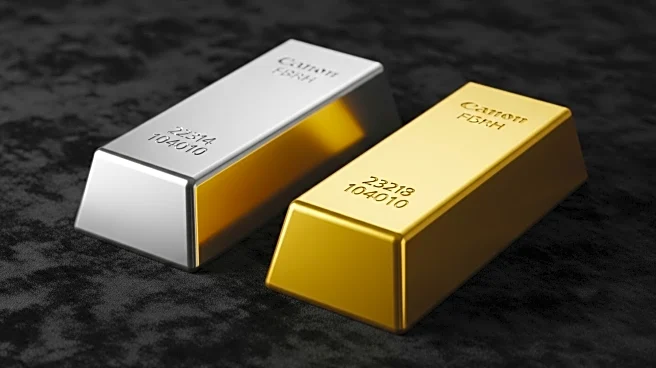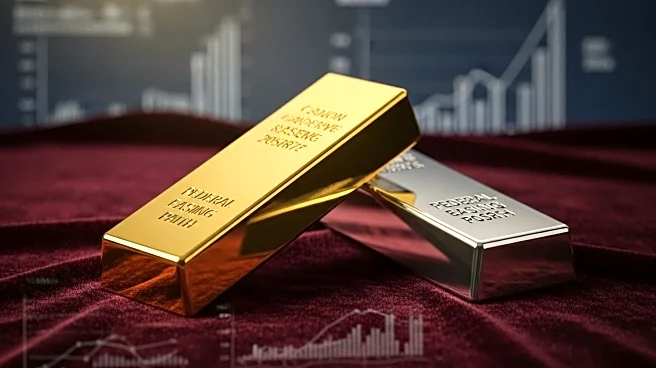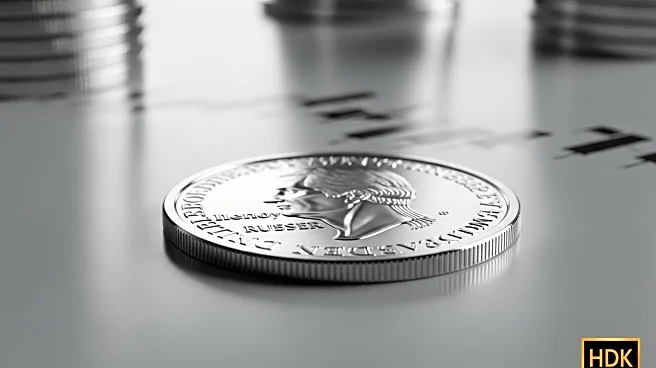What's Happening?
In 2025, gold prices have reached unprecedented levels, surpassing $3,500 per ounce. This surge is attributed to various macroeconomic and geopolitical factors, including trade tensions and the weakening of the U.S. dollar. Central banks have increased their gold purchases, signaling a shift in reserve management strategies. Investors are considering exchange-traded funds (ETFs) as a strategic approach to gain exposure to gold, offering benefits such as liquidity and tax efficiency. Analysts predict that gold prices could continue to rise, potentially reaching $4,000 per ounce by mid-2026.
Why It's Important?
The rise in gold prices highlights its role as a hedge against economic uncertainty and currency devaluation. For investors, ETFs provide a cost-effective and liquid means to invest in gold without the challenges of storing physical bullion. The increased interest in gold reflects broader concerns about global debt and fiscal instability. As central banks diversify their reserves, gold's appeal as a long-term store of value is reinforced. However, investors must balance their portfolios carefully, as over-allocation to gold can pose risks due to its lack of income generation.
What's Next?
Investors are advised to monitor macroeconomic indicators, such as inflation and trade developments, to strategically time their investments in gold. The potential for geopolitical tensions or economic deterioration could further drive gold prices up. However, if labor markets strengthen or geopolitical tensions ease, a pullback in gold prices may occur. The evolving role of gold as an inflation hedge rather than a pure safe-haven asset suggests that investors should integrate it into a diversified portfolio.
